Abstract
Daily diaries of respiratory symptoms are a powerful technique for detecting acute effects of air pollution exposure. While conceptually simple, these diary studies can be difficult to analyze. The daily symptom rates are highly correlated, even after adjustment for covariates, and this lack of independence must be considered in the analysis. Possible approaches include the use of incidence instead of prevalence rates and autoregressive models. Heterogeneity among subjects also induces dependencies in the data. These can be addressed by stratification and by two-stage models such as those developed by Korn and Whittemore. These approaches have been applied to two data sets: a cohort of school children participating in the Harvard Six Cities Study and a cohort of student nurses in Los Angeles. Both data sets provide evidence of autocorrelation and heterogeneity. Controlling for autocorrelation corrects the precision estimates, and because diary data are usually positively autocorrelated, this leads to larger variance estimates. Controlling for heterogeneity among subjects appears to increase the effect sizes for air pollution exposure. Preliminary results indicate associations between sulfur dioxide and cough incidence in children and between nitrogen dioxide and phlegm incidence in student nurses.
Full text
PDF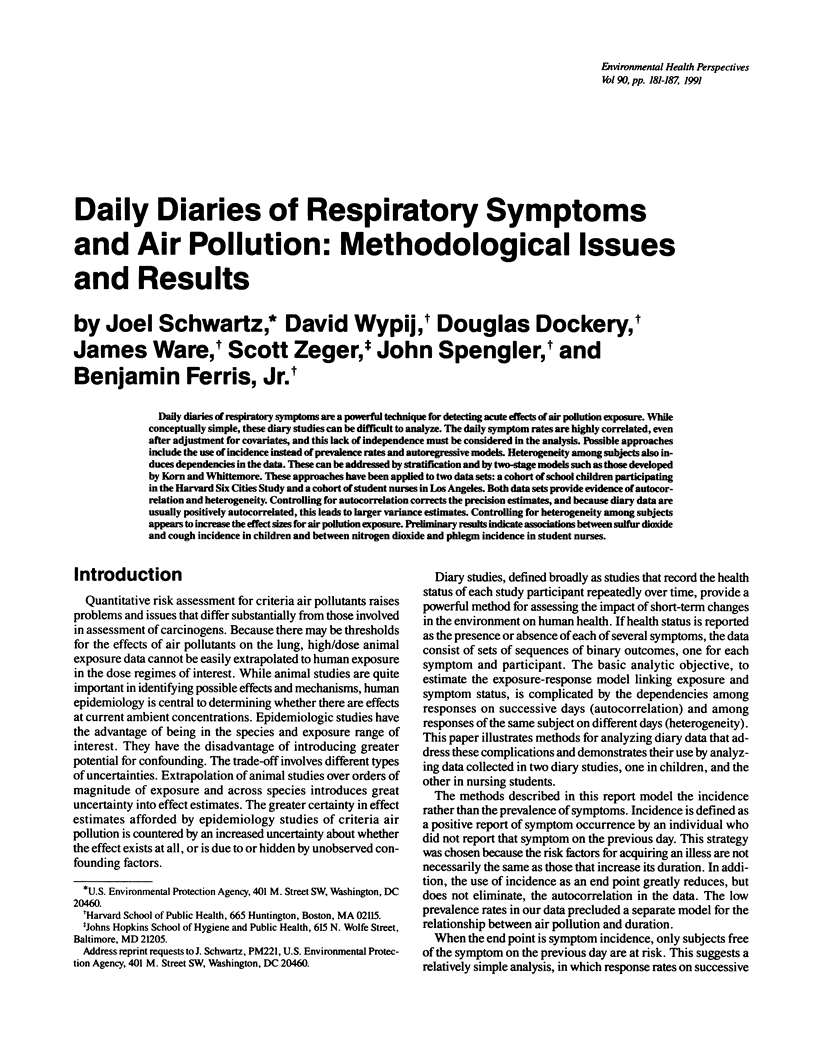
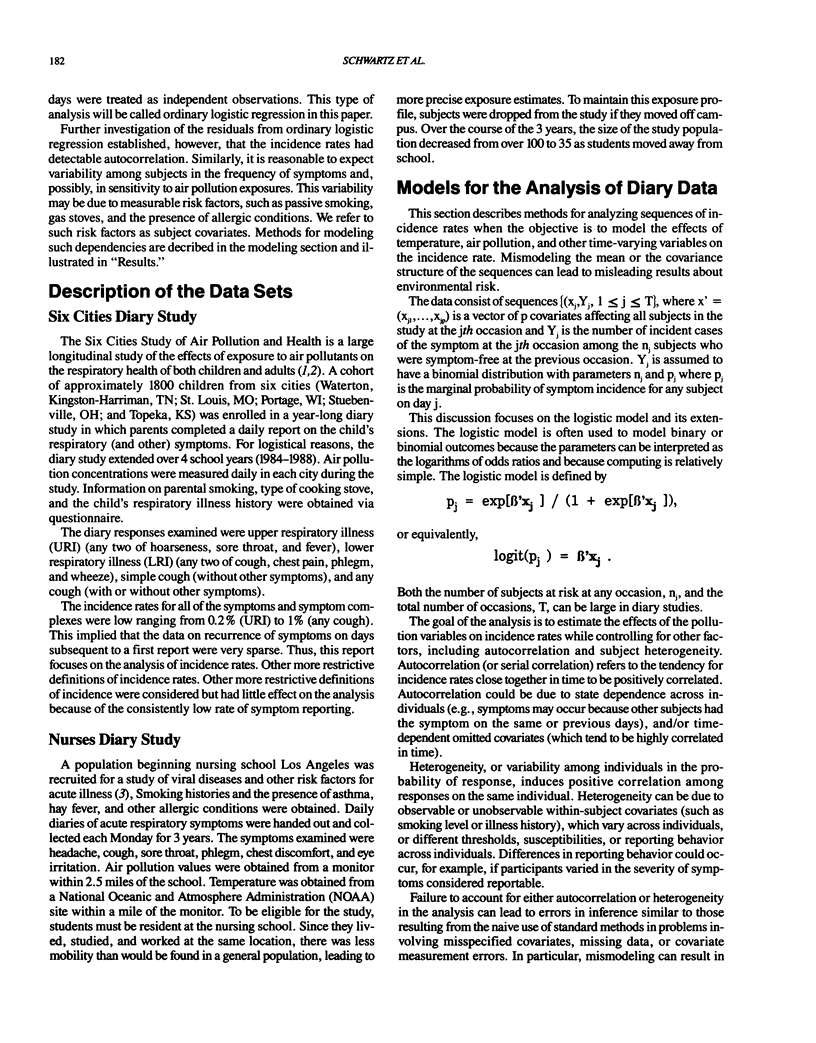
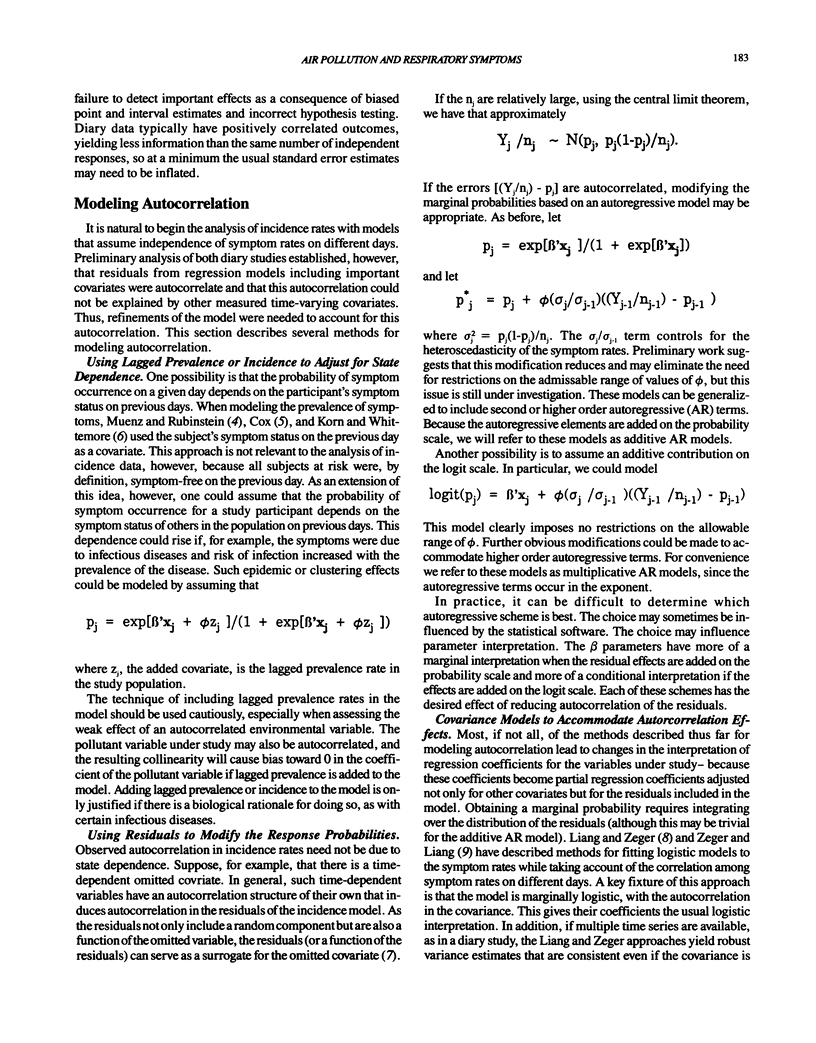
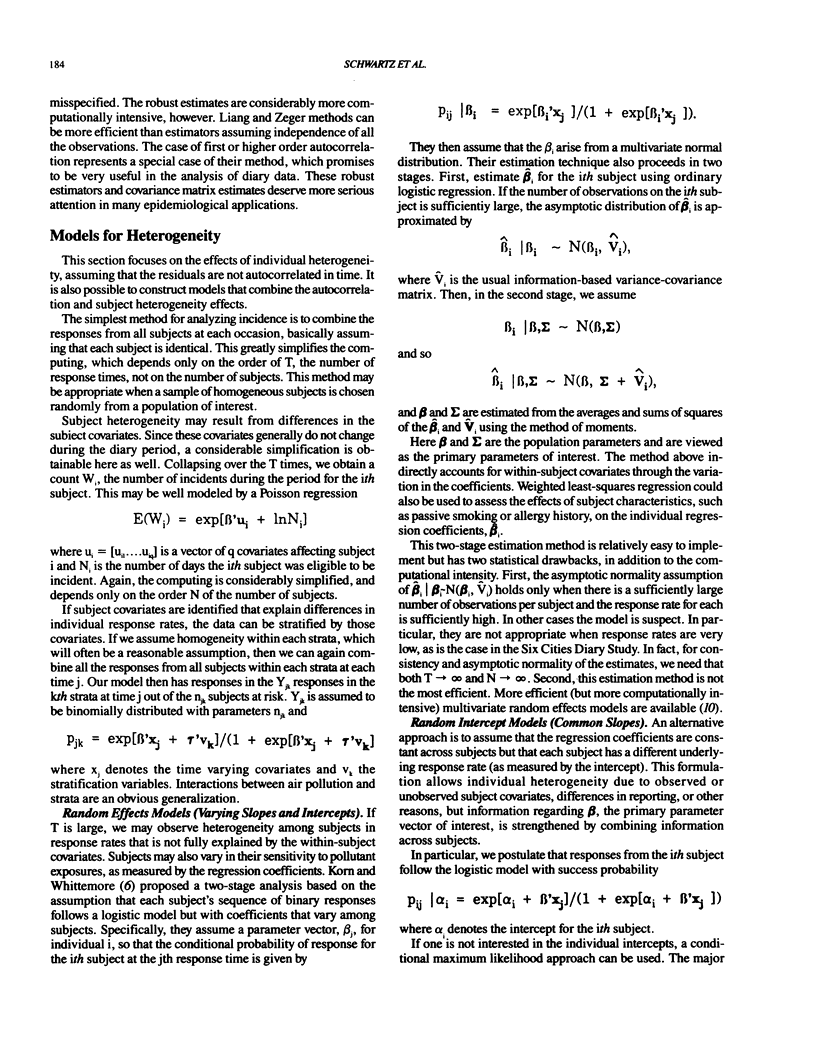
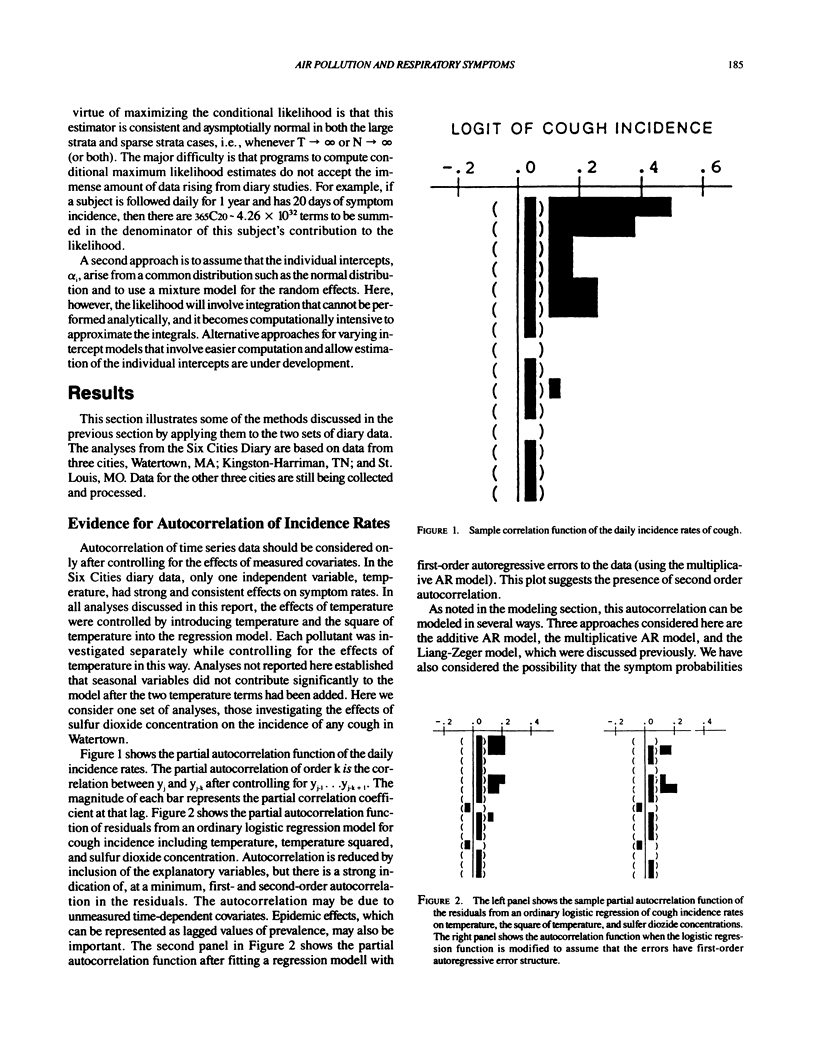
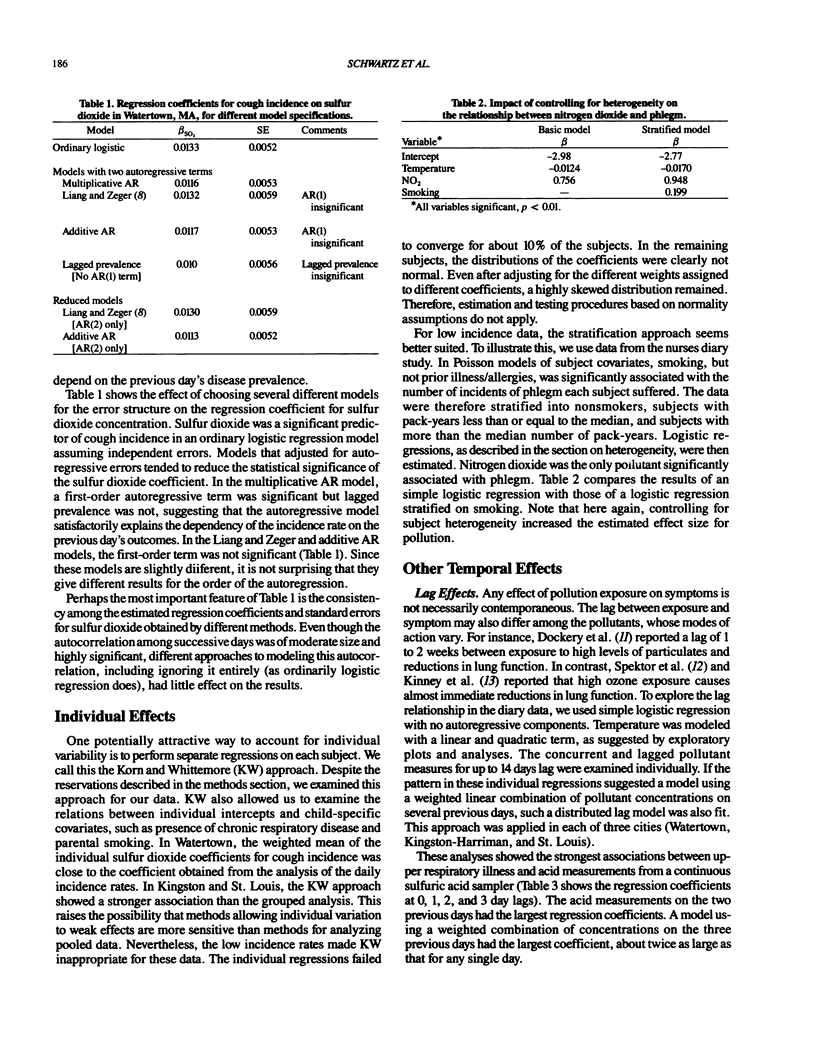
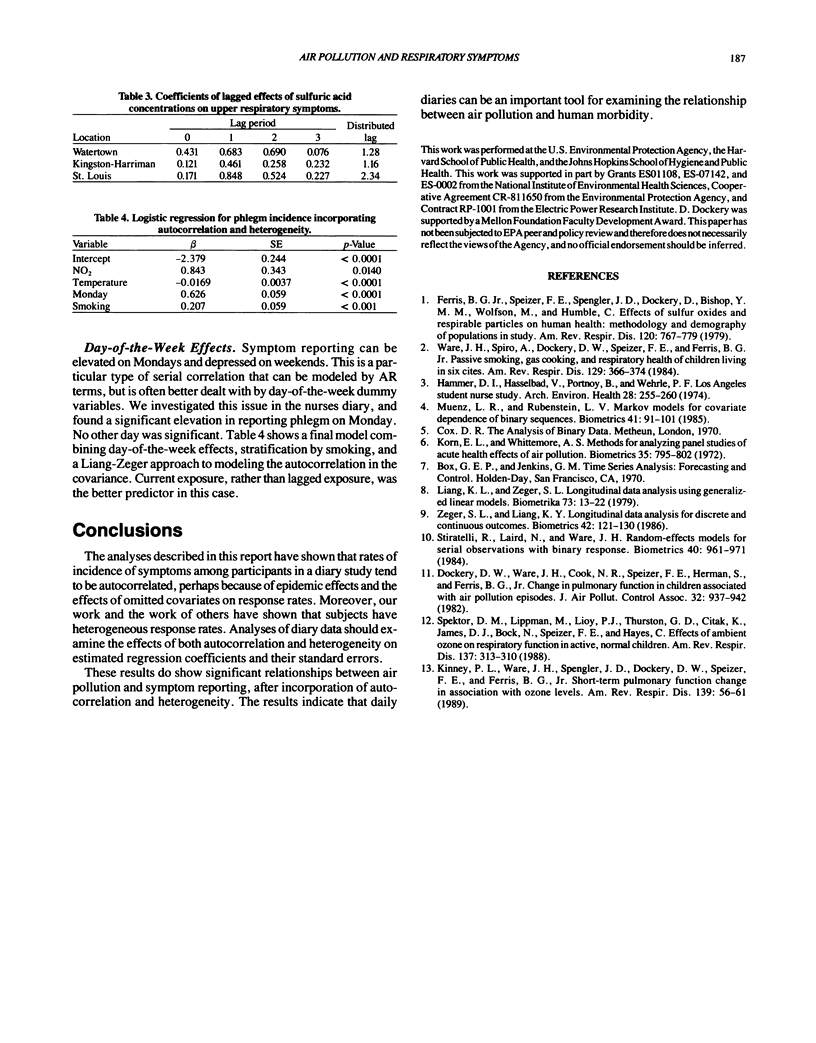
Selected References
These references are in PubMed. This may not be the complete list of references from this article.
- Dockery D. W., Ware J. H., Ferris B. G., Jr, Speizer F. E., Cook N. R., Herman S. M. Change in pulmonary function in children associated with air pollution episodes. J Air Pollut Control Assoc. 1982 Sep;32(9):937–942. doi: 10.1080/00022470.1982.10465494. [DOI] [PubMed] [Google Scholar]
- Ferris B. G., Jr, Speizer F. E., Spengler J. D., Dockery D., Bishop Y. M., Wolfson M., Humble C. Effects of sulfur oxides and respirable particles on human health. Methodology and demography of populations in study. Am Rev Respir Dis. 1979 Oct;120(4):767–779. doi: 10.1164/arrd.1979.120.4.767. [DOI] [PubMed] [Google Scholar]
- Hammer D. I., Hasselblad V., Portnoy B., Wehrle P. F. Los Angeles student nurse study. Daily symptom reporting and photochemical oxidants. Arch Environ Health. 1974 May;28(5):255–260. doi: 10.1080/00039896.1974.10666482. [DOI] [PubMed] [Google Scholar]
- Kinney P. L., Ware J. H., Spengler J. D., Dockery D. W., Speizer F. E., Ferris B. G., Jr Short-term pulmonary function change in association with ozone levels. Am Rev Respir Dis. 1989 Jan;139(1):56–61. doi: 10.1164/ajrccm/139.1.56. [DOI] [PubMed] [Google Scholar]
- Korn E. L., Whittemore A. S. Methods for analyzing panel studies of acute health effects of air pollution. Biometrics. 1979 Dec;35(4):795–802. [PubMed] [Google Scholar]
- Muenz L. R., Rubinstein L. V. Markov models for covariate dependence of binary sequences. Biometrics. 1985 Mar;41(1):91–101. [PubMed] [Google Scholar]
- Spektor D. M., Lippmann M., Lioy P. J., Thurston G. D., Citak K., James D. J., Bock N., Speizer F. E., Hayes C. Effects of ambient ozone on respiratory function in active, normal children. Am Rev Respir Dis. 1988 Feb;137(2):313–320. doi: 10.1164/ajrccm/137.2.313. [DOI] [PubMed] [Google Scholar]
- Stiratelli R., Laird N., Ware J. H. Random-effects models for serial observations with binary response. Biometrics. 1984 Dec;40(4):961–971. [PubMed] [Google Scholar]
- Ware J. H., Dockery D. W., Spiro A., 3rd, Speizer F. E., Ferris B. G., Jr Passive smoking, gas cooking, and respiratory health of children living in six cities. Am Rev Respir Dis. 1984 Mar;129(3):366–374. doi: 10.1164/arrd.1984.129.3.366. [DOI] [PubMed] [Google Scholar]
- Zeger S. L., Liang K. Y. Longitudinal data analysis for discrete and continuous outcomes. Biometrics. 1986 Mar;42(1):121–130. [PubMed] [Google Scholar]


